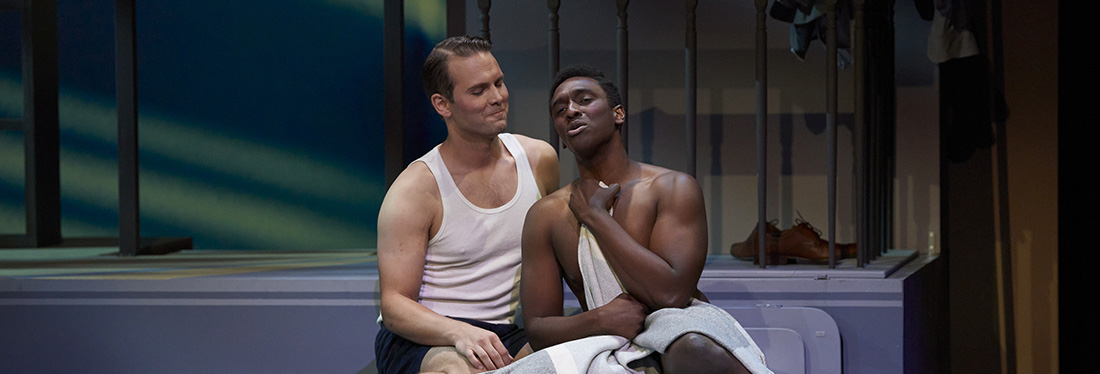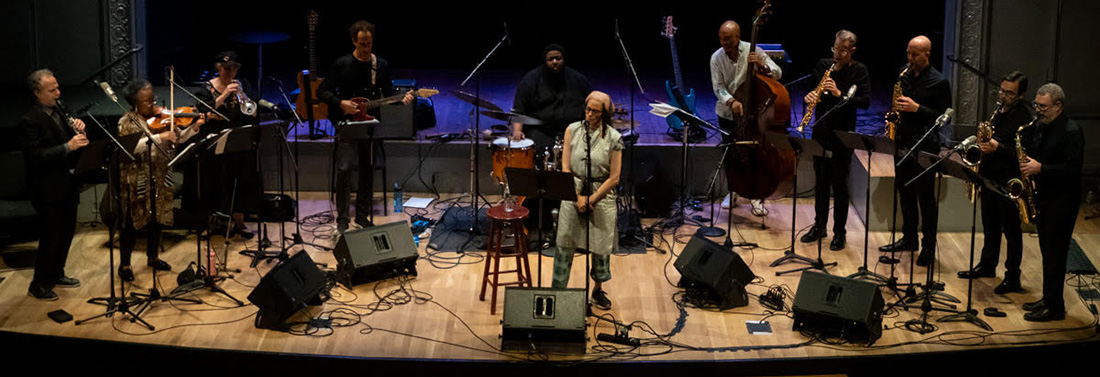

This time around, the direction of the opera—the second most performed operas in San Francisco Opera ‘s 100-year history (with 38 seasons)—was entrusted to Japanese director Amon Miyamoto. In a co-production with the Tokyo Nikikai Opera Foundation, Semperoper Dresden and The Royal Danish Opera Copenhagen, the production had its premiere in 2019 at the Tokyo Nikikai Opera Theatre, followed by Semperoper Dresden in October 2022 (after being delayed due to covid).
Historically, Madama Butterfly was San Francisco Opera founder Gaetano Merola’s favorite; he conducted the premiere in the second season (1924) and, in 1953, he passed away while conducting “Un bel dì” at the summer concert at Stern Grove. Over the century, numerous sopranos had portrayed the title role on the San Francisco Opera stage with Dorothy Kirsten and Licia Albanese took the records for the most frequent, with nine and eight seasons respectively.
In addition, the opera had a close tie with the city itself. While the (short) story was created by John Luther Long, it was San Francisco native David Belasco’s one-act play Madame Butterfly: A Tragedy of Japan that prompted Puccini to adapt it into the opera with his frequent librettists Luigi Illica and Giuseppe Giacosa, after seeing it in London.
In recent years, the opera had become increasingly difficult to stage because of its inherently problematic subject, and many opera houses around the world had been trying different approaches (https://www.nytimes.com/2022/07/02/arts/music/madama-butterfly-opera-puccini-stereotypes.html ) to present the opera without falling into its pitfalls. Miyamoto addressed the issue by “reinterpreting” the story as being told through the eyes of an adult Trouble (played by actor John Charles Quimpo), the son of Cio-Cio-San and Lt. B.F. Pinkerton.
When the curtain opened, we were presented not with early 20th century Nagasaki, but instead with the home of the Pinkertons in America some 30 years later. The ailing and grief-stricken Pinkerton was shown to give his son a diary about his time in Nagasaki, and as Trouble read it, he (and the audience) was taken back in time as the story came to life, similar to the use of Pensieve in Harry Potter and the Goblet of Fire (Book 4).
From then on, Trouble (just like Harry) became an active (but silent) participant of the whole proceeding, and he stayed on stage pretty much the whole time, except for the Act 1 love scene (because no kid ever wanted to watch his parents got it on!) Similar framing (starting with short silent act at Pinkerton’s home in America) was utilized in the beginning of both Act 2 and Act 3 and at the end, firmly establishing that the whole story was Trouble’s imagination reading his dad’s diary! One question crossed my mind during all three silent acts—did Pinkerton bring Suzuki to America with him (all three scenes had an old lady in kimono)?
In that regards, Miyamoto’s and Associate Director Miroku Shimada’s vision was fully supported by Boris Kudli?ka’s minimalistic sets, and they could simply be described as a ballet of curtains, as various curtains came from various directions to be used for multiple purposes; from delineating each scene from another, providing backdrops, to becoming background screens for Bartek Macias’ various projections amid Fabio Antoci’s soft lightings.
The centerpiece of the stage was Cio-Cio-San’s house, a movable and rotatable wooden box with three sides representing shoji (sliding panels made from wooden frames) and one side having a large circular opening. The graceful movements of those screens and that box emphasized the dream-like quality of the staging, and Macias’ projections provides much-needed details (from pages of Pinkerton’s diary to the flower petals of Cio-Cio-San’s garden in Act 2), and they were artfully and creatively crafted.
The shift to Trouble’s learning about his mother did somehow help to “soften” the blow of the harsh reality (and the source of controversy) of the original story, even without any changes to the libretto (and translation). Nevertheless, this reframing was particularly effective in Act 2 and Act 3 (both presented with only a short break in between after intermission).
The scenes where he saw that his dad and his stepmom were trying to “kidnap” him and when his mother performed hara-kiri were both excruciatingly heartbreaking; while the young Trouble was blindfolded for that final scene, the older one wasn’t. By the way, the ritual itself was performed off-stage (with just a change of color of that shoji) and the scene where Pinkerton rushed towards a dying Cio-Cio-San was relegated to the older Pinkerton remembering that painful day. To some this might prove to be underwhelming, but I thought it was tastefully done!
However, this point of view also presented a different problem, specifically in Act 1, where the older Trouble’s presence was more erratic and borderline distracting. He was directed to do running around Cio-Cio-San’s family as if he was just a kid, and it served nothing to the dramaturgy. Luckily, he was stationed more like an observer to the side of the house for the last two acts. However, I still thought that it was a grave mistake to have him moving all over and even trying to touch his mom and his younger self during “The Humming Chorus”; I always associated that moment with time standing still!
The beautiful costumes for this production were designed by the late Kenz? Takada, the famed Japanese fashion designer and founder of the Kenzo label, who sadly passed away from Covid in October 2020, with associated costume designer Sonoko Takeda. I personally loved the deconstructed white kimono wedding dress for Cio-Cio-San; while she wore the full regalia for the wedding scene in Act 1, she was only in her undergarment and flowing outer jacket portion for Act 3, signifying the lost of time and innocence!
Musically, last Saturday was a happy affair due to the uniformly excellent cast led by the steady hand of SF Opera Music Director Eun Sun Kim. Kim flowingly conducted Puccini’s ravishing score with vigor and resolution in a moving reading that matched the smooth transitions of the sets on stage and pushed the actions forward. The Chorus, led by John Keene, provided a sizeable contribution to the whole proceeding, and their “Humming Chorus” rendition proved to be one of the highlights!
As Pinkerton, tenor Michael Fabiano had the right temperament for the character; from pompous to lovelorn in Act 1 to remorseful in the last Act. The bright timbre of his voice sounded effortless and particularly arresting, and at the end of the Act 1, one would believe that Pinkerton actually was in love with Cio-Cio-San!
Lucas Meachem presented a more nuanced take on Sharpless, alternating between his care for Cio-Cio-San and his frustration with Pinkerton. On Saturday, he sounded much less forceful than the last few times I heard him, and he seemed to trade it with sympathetic warmth which was beneficial for his characterization.
Mezzo Hyona Kim, who dazzled as Lady Wang in last year’s Dream of the Red Chamber, was even more mesmerizing as the scene-stealer Suzuki with her round and sonorous sound and her heartfelt acting. Her Flower Duet with Cio-Cio-San was particularly memorable as they sounded harmonious together! All other comprimario roles were handled handsomely, starting with veteran Julius Ahn’s (who also sang the role in the last 2 productions, 2016 and 2014) highly sympathetic Goro, Kidon Choi’s commanding Prince Yamadori and Adler Fellows Jongwon Han and Mikayla Sager’s distinguished takes on The Bonze and Kate Pinkerton respectively.
Ultimately, the success of any productions of Madama Butterfly lay on the soprano who sings the title role, and debuting South Korean Karah Son—who has made a career of singing Cio-Cio-San across Europe, North America and Australia, including 2019 Stuttgart under Kim—fit the bill.
While initially she sounded a little tentative with a rather grainy top notes (particularly during “Ancora un passo”) in Act 1, subsequently her characterization bloomed, and her voice soared starting Act 2 onwards. I specifically enjoyed her refreshing portrayal of part-childish, part-stubborn 18-years-old single mother in Act 2. Too often this part was acted as someone who was much older, betraying the story. Son’s “Un bel dì, vedremo” was imbued with naivety, almost to the point of delusion. The audience clearly loved her intense take on the role, and on Saturday she was rightfully showered with the biggest cheers!
In conclusion, it was a fine presentation of one of Puccini’s most well-loved operas with an interesting update on the story, and I was glad to see that it was pretty well attended. I had to applaud San Francisco Opera for updating the synopsis to reflect the changes in the dramaturgy, too often I encountered an opera reinterpretation with an out-of-date synopsis that created much confusion. For the final show on July 1, current Adler Fellow Moisés Salazar will take over as Pinkerton.
Photo: Cory Weaver/San Francisco Opera




























Comments